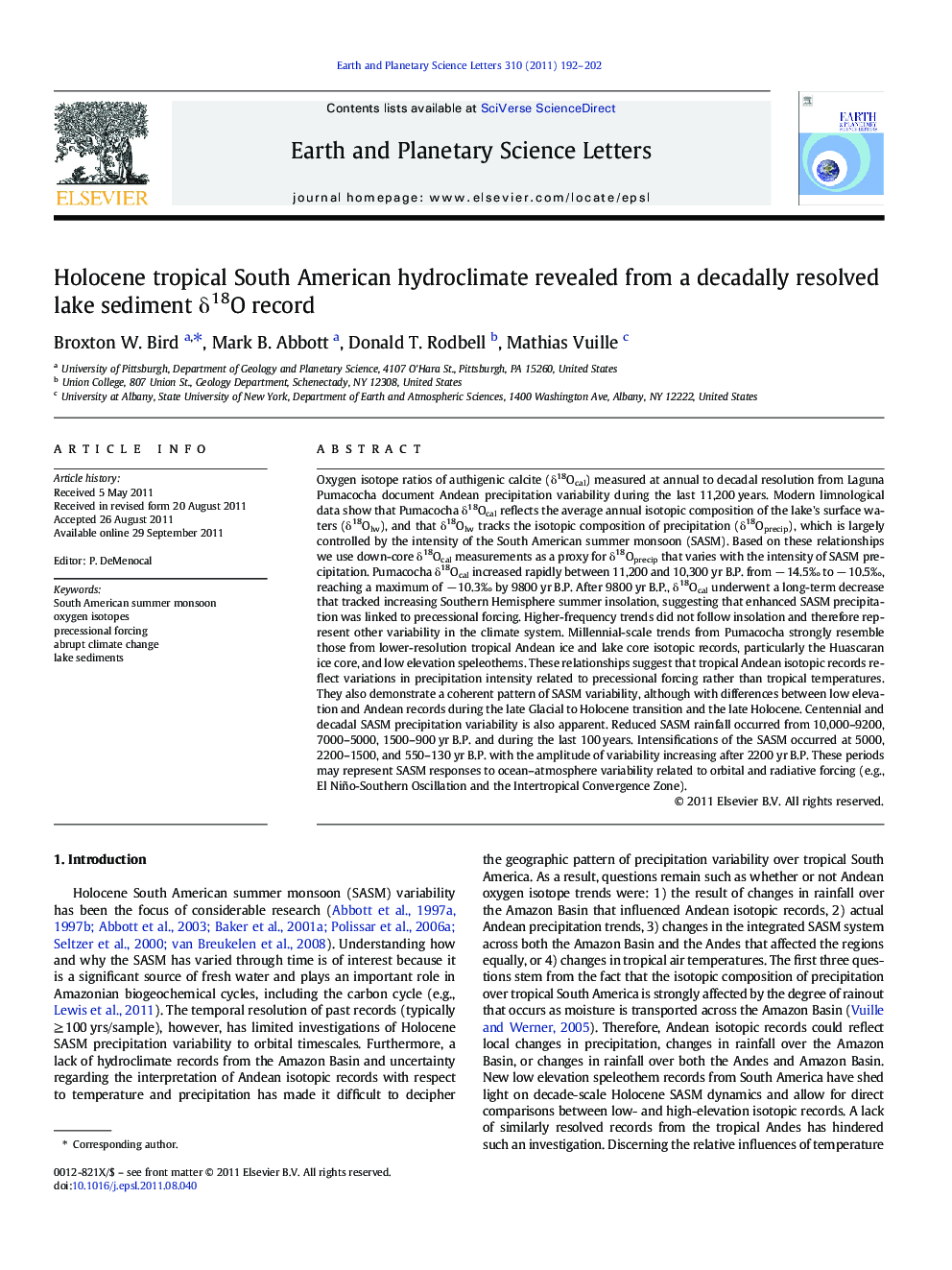| کد مقاله | کد نشریه | سال انتشار | مقاله انگلیسی | نسخه تمام متن |
|---|---|---|---|---|
| 4677731 | 1634819 | 2011 | 11 صفحه PDF | دانلود رایگان |

Oxygen isotope ratios of authigenic calcite (δ18Ocal) measured at annual to decadal resolution from Laguna Pumacocha document Andean precipitation variability during the last 11,200 years. Modern limnological data show that Pumacocha δ18Ocal reflects the average annual isotopic composition of the lake's surface waters (δ18Olw), and that δ18Olw tracks the isotopic composition of precipitation (δ18Oprecip), which is largely controlled by the intensity of the South American summer monsoon (SASM). Based on these relationships we use down-core δ18Ocal measurements as a proxy for δ18Oprecip that varies with the intensity of SASM precipitation. Pumacocha δ18Ocal increased rapidly between 11,200 and 10,300 yr B.P. from − 14.5‰ to − 10.5‰, reaching a maximum of − 10.3‰ by 9800 yr B.P. After 9800 yr B.P., δ18Ocal underwent a long-term decrease that tracked increasing Southern Hemisphere summer insolation, suggesting that enhanced SASM precipitation was linked to precessional forcing. Higher-frequency trends did not follow insolation and therefore represent other variability in the climate system. Millennial-scale trends from Pumacocha strongly resemble those from lower-resolution tropical Andean ice and lake core isotopic records, particularly the Huascaran ice core, and low elevation speleothems. These relationships suggest that tropical Andean isotopic records reflect variations in precipitation intensity related to precessional forcing rather than tropical temperatures. They also demonstrate a coherent pattern of SASM variability, although with differences between low elevation and Andean records during the late Glacial to Holocene transition and the late Holocene. Centennial and decadal SASM precipitation variability is also apparent. Reduced SASM rainfall occurred from 10,000–9200, 7000–5000, 1500–900 yr B.P. and during the last 100 years. Intensifications of the SASM occurred at 5000, 2200–1500, and 550–130 yr B.P. with the amplitude of variability increasing after 2200 yr B.P. These periods may represent SASM responses to ocean–atmosphere variability related to orbital and radiative forcing (e.g., El Niño-Southern Oscillation and the Intertropical Convergence Zone).
► Lake calcite oxygen isotopes detail Holocene tropical South American precipitation.
► Pumacocha is significantly correlated with the independently dated Huascaran record.
► Precipitation variability is complex, but consistent across tropical South America.
► Increasing Southern Hemisphere insolation forced increasing Holocene precipitation.
► ENSO, ITCZ, and sea ice feedbacks likely contributed to precipitation variability.
Journal: Earth and Planetary Science Letters - Volume 310, Issues 3–4, 15 October 2011, Pages 192–202